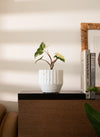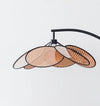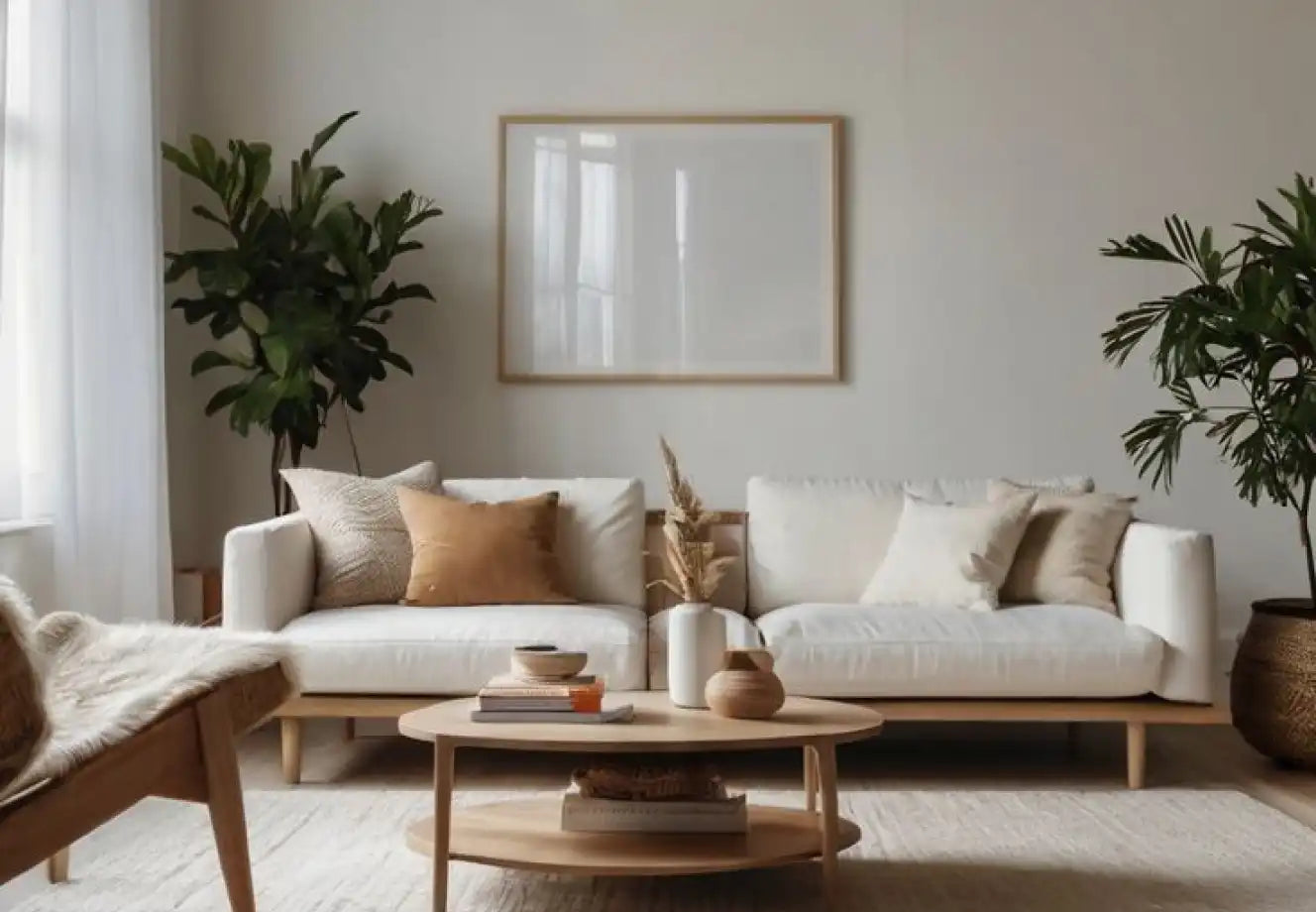Designing a beautiful home goes beyond just adding pretty decorations; it’s really about crafting a space that truly fits your lifestyle.
But even with the best intentions, it’s surprisingly easy to fall into common interior design traps. Maybe you’ve added one too many statement pieces. Or chosen a trendy chair that looks stunning but feels like sitting on stone. These small design mistakes don’t just affect how your space looks; they shift how it feels, day in and day out.
I’ve seen it often: mismatched styles, awkward layouts, poor lighting, or skipping thoughtful home decor elements like rugs and storage. The result? A space that feels cluttered, off-balance, or just not “you.”
At Gharko, we believe great design is about more than trends, it’s about curating warmth, comfort, and timeless charm. From thoughtfully styled lighting pieces to neutral, grounding soft furnishings, every detail should support how you actually live.
In this guide, I’ll walk you through 12 of the most common interior design mistakes and how to fix them. Whether you’re starting fresh or simply restyling a room, these tips will help you build a home that feels cohesive, intentional, and beautifully you.
Let’s make sure your home reflects you, not design regret.
Why Interior Design Mistakes Matter More Than You Think
Designing your home isn’t just about choosing colors and buying decor, it’s about creating a space that feels just right every single day. Like a room full of instruments slightly out of tune, even the smallest design mistakes can create visual and emotional dissonance. Poor lighting choices, awkward furniture placement, or mismatched styles may not seem urgent, but they can lead to ongoing frustration, clutter, and discomfort. These are more than just common home decor fails—they’re roadblocks to how smoothly your space functions.
Your home speaks before you do. From the entryway to the living room, every corner reflects your style, personality, and priorities. A poorly thought-out room layout or low-quality decor can leave your home feeling cold or chaotic instead of calm and welcoming. At Gharko, we believe intentional design is everything, whether it’s selecting comfort furniture you’ll love sinking into or choosing rugs that anchor and elevate your space without overpowering it.
Today’s most thoughtful interiors aren’t built around fleeting decor trends but around lifestyle—clean, timeless, and functional. That’s why our collections focus on refined textures, practical elegance, and designs that help you avoid impractical home design solutions. Whether you’re styling a compact apartment or reworking a larger home, being mindful of these common interior design mistakes is the first step toward a space that feels truly yours.
The 12 Most Common Interior Design Blunders
1. Overcrowding with Furniture: When More Turns into a Messy Nightmare
Trying to make a space feel inviting by filling every corner with furniture is a classic mistake. While the intention is often cozy, the result is usually cramped and overwhelming. An overcrowded home disrupts the flow, making it harder to move around or even enjoy the pieces you’ve chosen. Instead of warmth, you get visual noise.
This is where many interior design plans go wrong, by forgetting that space itself is a design element. A room needs breathing room. Start by paring down. Focus on essential, comfort furniture that serves both style and function. Be mindful of spacing between pieces, especially in small rooms where furniture scale mistakes are easy to make.
At Gharko, we champion thoughtful, uncluttered layouts. Sometimes, what you don’t add matters more. Choose a few key pieces that ground the space and let them shine—your home will feel lighter, more open, and far more inviting.

2. Skimping on Quality Materials: The Hidden Cost of Cheap Decor
Low-quality decor might seem like a budget-friendly win, but it often leads to long-term regret. Flimsy finishes, peeling veneers, and wobbly furniture not only look cheap over time but also undercut your entire design. These are the low-quality home decor problems that cost more in the long run.
Instead of filling your space with fast fixes, invest in fewer but better-quality pieces. Prioritize materials that age well- like real wood, natural fibers, and durable metals. These elements not only last longer but also elevate the overall feel of your home.
At Gharko, every product is designed with longevity in mind—built to last, both in style and in strength. A thoughtfully chosen console table or woven rug can outlive trends and become a staple in your space. When you choose quality, you don’t just buy decor, you invest in a home that grows more beautiful over time.

3. Ignoring the Power of Lighting: Why Your Home Feels Off
Lighting isn’t just about functionality; it’s deeply emotional. It sets the mood, creates an atmosphere, and showcases your favorite spots. However, many people overlook common lighting mistakes that can throw off the vibe of even the most beautifully designed spaces. Relying only on overhead lights or using harsh, cold bulbs can make your home feel dull and lifeless.
So, what’s the fix? It’s all about layering your lighting. Mix ambient lighting for a cozy glow, task lighting for focused areas (like kitchens or reading nooks), and accent lighting to draw attention to your decor or artwork.
At Gharko, we’ve crafted our lighting collection to provide that layered warmth—think soft glows, dimmable options, and artistic designs that do more than just illuminate a room. The right lighting can completely change how your home feels throughout the day, enhancing everything from your evening relaxation to your morning routine.
Great lighting doesn’t just brighten a space; it breathes life into it.

4. Compromising on Storage: The Pitfall of Impractical Design Choices
A beautiful home that lacks storage isn’t functional; it’s frustrating. Clutter builds up quickly when there’s nowhere to tuck things away. Ignoring home storage needs is one of the most overlooked design mistakes, especially when style is prioritized over practicality.
It’s not about hiding everything; it’s about giving each item a home. Think smart shelving, under-bed drawers, built-in units, or dual-purpose furniture that works harder for you. These impractical home design solutions can be avoided with a little forward planning.
At Gharko, we design with both aesthetics and functionality in mind. Our products blend storage seamlessly into home decor, so you don’t have to choose between form and function. A clutter-free home doesn’t just look better, it feels calmer and works better for your everyday life.
When your storage works with your space, everything else falls into place.

5. Forgetting the Theme: How Mismatched Decor Ruins Your Vibe
Mixing styles can be fun, but without a clear theme, your home can quickly feel disjointed. A rustic coffee table clashing with a sleek, modern sofa or loud patterns competing with muted tones—these mismatched home decor ideas often create more confusion than charm.
Choosing a design theme doesn’t mean everything has to match perfectly. It means curating a consistent story throughout your space. Pick a color palette, define your style—be it minimal, modern, or earthy—and build around that. Use textures and accents to add personality without losing cohesion.
Think of your home as a visual conversation. If every piece speaks a different language, the result is noise. But when elements echo each other—even subtly—you create flow and harmony. A cohesive theme makes your home feel intentional, calming, and truly put together.

6. Choosing Style Over Comfort: The Sofa Trap You’ll Regret Daily
That ultra-sleek sofa you spotted online? It may look stunning, but if it feels like sitting on concrete, it’s a regret waiting to happen. One of the most painful interior design mistakes is sacrificing comfort for looks, especially when it comes to everyday furniture.
Uncomfortable home furniture regrets are common because many people buy with their eyes, not their lifestyle. But a home isn’t a showroom. You live in it. Lounge in it. Nap on that sofa and eat at that dining table. If it doesn’t support your daily habits, it’s a poor investment- no matter how good it looks on Instagram.
The fix? Always test furniture before buying, and read reviews for comfort. Look for pieces that combine supportive structure with soft finishes. Today’s best comfort furniture offers both design and functionality without compromise.
Because in the end, true style is about how your home feels, not just how it photographs.

7. Ignoring Scale and Proportion: The Secret to a Balanced Room
You can have all the right pieces, but if the scale is off, the entire room feels “off.” A sofa too large for the room, a coffee table too small for the seating area, or artwork that disappears on a large wall- these are common furniture scale mistakes in small rooms and big ones alike.
Proportion is everything. It helps your room feel balanced and thoughtfully designed. Before buying anything, measure your space and the furniture. Tape out layouts on the floor if you need to visualize them. Leave enough breathing room between pieces for movement and flow.
This is especially crucial in small spaces, where oversized furniture can dominate and shrink the feel of the room. The best room layouts feel natural, not forced. Keep it simple, scaled, and smart, and your space will look bigger, work better, and feel far more comfortable.

8. Filling Every Wall With Furniture: A Layout Blunder to Avoid
Walls aren’t just there to hold furniture, and treating them like they are is a fast way to make a room feel boxed in. One of the most common furniture placement errors is pushing every piece against a wall, leaving the center of the room cold and disconnected.
While it might seem like a way to “open up” space, this layout actually restricts flow and makes the room feel stiff. Instead, try floating furniture away from the walls when possible. Anchor pieces with a rug or central table to create defined zones, especially in open-plan spaces.
This approach encourages better conversation flow, visual warmth, and a more dynamic room layout overall. Think of your furniture as part of a composition, not just something to be stored around the edges. Let your walls breathe, your room will thank you for it.

9. Choosing Trends Over Timelessness: Why Your Decor Dates Fast
Trends are tempting. They’re everywhere on your feed, in showrooms, and in those “must-have” seasonal drops. But chasing trends without considering longevity leads to quick burnout and costly redesigns. This is one of the most common trendy home decor pitfalls to avoid.
What’s “in” today might look tired next year. If you fill your home with ultra-trendy colors, patterns, or novelty pieces, it can date your space faster than you’d like. The fix? Use trends as accents—pillows, vases, or art that’s easy to swap. Keep your core pieces and palette more neutral or classic.
Timeless home decor ideas don’t mean boring—they mean adaptable. They give your space the flexibility to evolve without needing a full makeover. Design with the long view in mind, and you’ll love your space longer—and save yourself from constant refresh cycles.

10. Forgetting About Vertical Space: Wasted Room You Can Reclaim
When designing a room, it’s easy to focus only on what’s in your line of sight—eye-level furniture, floor decor, maybe a rug. But that means you’re missing out on a huge asset: your walls. Ignoring vertical space is one of the biggest home design mistakes that leads to clutter and underused areas.
Smart vertical design not only maximizes your storage—it adds visual interest and dimension. Think tall shelving, wall-mounted lighting, hanging plants, or even gallery-style art arrangements. These elements pull the eye upward and make a room feel more expansive, not more crowded.
In smaller homes, this trick is especially powerful. It helps you keep surfaces clear while still displaying your personality. Whether it's extra home storage or a decorative wall moment, using your vertical space wisely can completely shift the feel of a room—from cramped to considered.

11. Skipping a Focal Point: When the Room Lacks Direction
Every room needs a moment—a piece that draws the eye and gives the space clarity. Without a focal point, a room can feel scattered, like it’s missing purpose. You might have beautiful furniture, great lighting, and stylish accessories, but if nothing anchors the space, it can all blend into background noise.
The fix? Decide what you want the room to highlight. It could be a statement mirror, a piece of art, or a bold pendant light. In living rooms, a well-placed sofa or a unique planter from your collection can also become the center of attention. From there, let the rest of the room support that moment.
A focal point doesn’t need to be loud—but it should be clear. When your eye knows where to land, everything else falls into place.

12. Mismeasuring Curtains: The Small Detail That Throws Everything Off
Curtains might not be the first thing you think of in a room—but they have a surprisingly big impact. Hang them too low or choose the wrong length, and the entire room can feel short or off-balance. It’s one of those small home decor mistakes that quietly disrupts the look and feel of a space.
The key? Go higher and wider. Mount your curtain rods closer to the ceiling to draw the eye upward, and choose lengths that just kiss the floor. This creates an illusion of height and softness—especially helpful in smaller rooms.
When done right, curtains frame your windows like a well-tailored outfit. It’s not just about coverage—it’s about giving your room a polished, elevated finish.

Final Thoughts: Design with Intention, Live with Ease
Every home has its own unique story, and often, it’s the little details that make the biggest impact. From carefully arranging your furniture to steering clear of common lighting blunders, each design choice influences the vibe and functionality of your space. The great news? Most of these interior design hiccups are simple to fix once you know what to look for.
Whether you’re grappling with a cramped layout, figuring out where to place your rug, or trying to keep up with ever-changing decor trends, small, thoughtful tweaks can create a significant difference. Remember, design doesn’t have to be flawless; it just needs to feel like home.
At Gharko, we’re all about helping you craft a home that radiates warmth, stability, and effortless style—without the hassle of endless do-overs. Start with a clear intention, simplify when necessary, and select pieces that bring both comfort and clarity to your environment.
After all, the best-designed homes aren’t the ones that are over-decorated; they’re the ones that are truly lived in.






